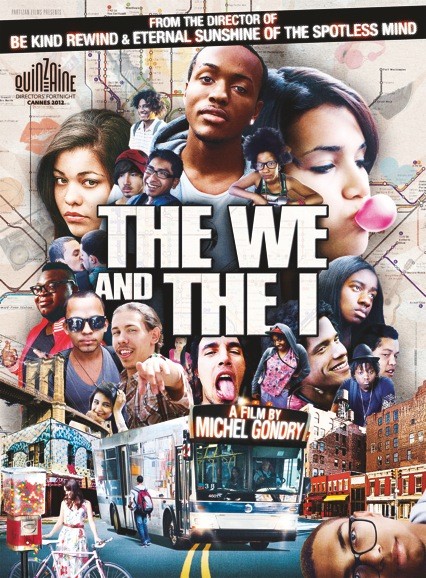“The We And The I”- Film Review
Have you ever been riding along peacefully on the good old MTA, when all of a sudden at the next stop, a mob of kids just out of school, fills the subway car or bus with raucous noise and energy? Often this can be quite an unnerving experience, to say the least. It was a similar experience that led French director, Michel Gondry, to make the fresh and original, dramedy, “The We and the I” which opened March 8th.
It’s the last day of school, and a quiet city bus is transformed into a quasi detention center as it is filled with a gaggle of inner city teenagers getting ready for summer vacation. Gondry does not paint a glossy picture here. A group of bullies occupy the back row, where two elementary school kids are threatened, and an elderly woman is ordered to give up her seat. Near the front of the bus, a self absorbed princess (Laidychen Carrasco) agonizes over her sweet 16 party invitation list, and soon what seems to be a troubled young lady (Teresa Lynn) appears with a new blond wig only to encounter the relentless mockery of her peers, as she pines for one of the mean kids (Michael Brodie) . Vignettes make up the bulk of the largely plotless film. Save for the flashbacks, most of the action takes place on the bus.
The unsympathetic framing of the students works very well at first. Gondry cast real life New York teenagers from The Point, a community center in the Bronx, to give us a non judgmental glimpse of the world of these teens. Apparently Gondry spent three years work-shopping the story with the kids and it shows. Gondry’s facility with the teens is impressive. The cast seem very relaxed and natural, and it almost feels as if we are fellow passengers on the bus as we eavesdrop on the various goings on. Gondry’s visual style, used to such effectiveness in Eternal Sunshine of the Spotless Mind is used to great effect here as well. The exploration of the teens use of video, texting and cell phones is done imaginatively in various flashbacks. The film has comic, almost magical realistic moments, for instance, when Laidychen’s brother comes, Jesus like, onto the bus to settle a dispute, or when one of the nerdier kids lays it on thick about partying with Donald Trump.
Not all is sure footed here. With all of the jumping around between stories, many of the characters seem only partially realized and even cartoonish. More reflective scenes seem forced in the third act. Gondry also treads dangerous racial waters (a la Birth of a Nation) when all the kids lasciviously eye a beautiful white girl, riding her bike in slow motion. Also, I couldn’t help but feel uneasy when I found out at the screening that a pivotal scene, where one of the boys breaks up with his lover, was actually an unscripted, and all-too-real moment captured on film. Ethical questions of exploitation did cross my mind–which begs the question if this could not have been more affecting, if it had been a straight documentary.
The attempt to connect us to the characters ultimately falls flat, and we, notwithstanding the attempts of the filmmakers, still feel like the “other”– unable to relate to the stereotypes that are left on the screen. Perhaps this is what motivated Gondry, (very awkwardly) , to put a narrated letter at the end credits from the mother of some of the students, expressing gratitude for the kids participation.
Yet still, the energy and freshness of the teens, and the ambition of Gondry to communicate the journey from peer identity to self direction make this bus ride very worthy of the swipe.


1 Comment Added
Add yours